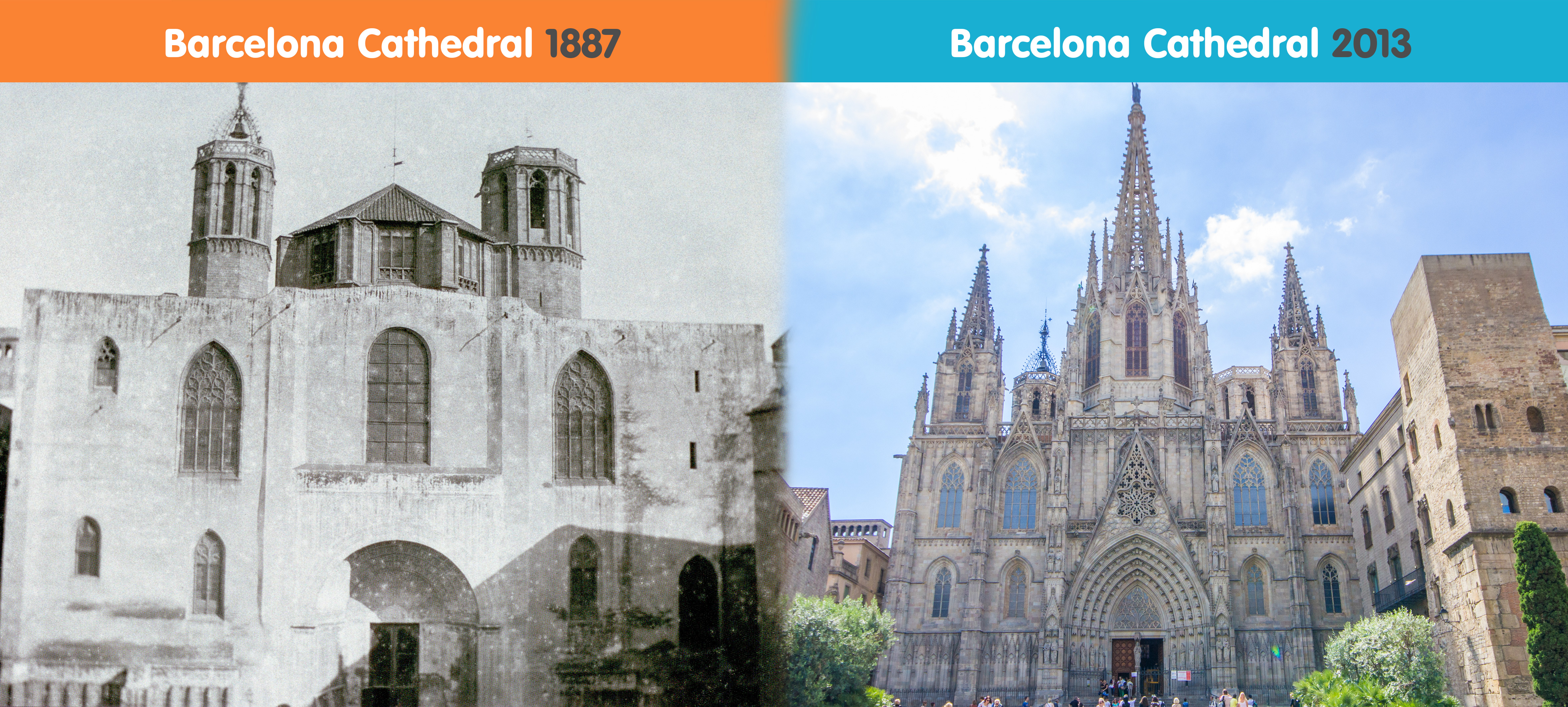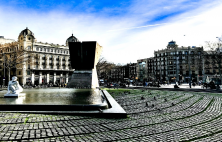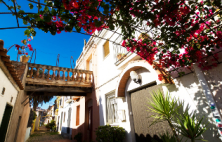Eulalia and The Roman Origins

Apartments in Gothic Quarter
If you come to visit Barcelona, we advise you to stay in an apartment in a Gothic Quarter. This way, you will know one of the most emblematic districts of Barcelona and save money since hotels are more expensive and offer you less space and comfort.
Barcelona Cathedral has always been known as a cathedral of the people and for almost as long as there has been a city, there has been a site for religious ceremony. Back when the city was known as Barcino and ruled by the roman empire, a girl of 13 years called Eulalia was persecuted for her Christian beliefs. It is said she was shoved into a barrel and thrown down the street known as the "Slope of Eulalia" (Baixada de Santa Eulàlia), just adjacent to the Cathedral. After undergoing a series of other tortures, she became known as a martyr and was buried in 303 A.D. at what is now known today as the site Santa Maria del Mar.
Excursions in Barcelona
Enjoy Barcelona to the full and fill your trip with unforgettable experiences and emotions reserving an excursion in the Catalan capital organized by the GetYourGuide team. Thanks to the local guides you will discover the pure life of the city and feel the soul of Barcelona! Choose your excursion and fall in love with Barcelona:
The sad thing about Eulalia's story is that if she were to have been born just ten years later, she would have witnessed the beginning of Christian acceptance in the Roman Empire in 313 A.D. under Constantine. A church was built at the end of the same century as her death over a temple dedicated to the Roman God, Jupiter; in the place that is known today as Barcelona Cathedral, The Cathedral of the Holy Cross and Saint Eulalia, or La Seu depending on who you ask.
Visigoth Barcelona and the Development of the Site

Not so long after, enter the Visigoths, who were a very religious bunch. Though at first they only formed a minority in the largely romanic society, they would become a huge influence, especially over religion. During this time Christianity flourished, permitting much investment into religious structures, so they turned the church into a Cathedral dedicated to the Holy Cross (as it still is today). After developing the building, they then converted it from a Catholic to an Arian place of practice. It was the religious centre of the city before the Visigoths decided that the 'Basílica dels Sants Màrtirs Just i Pastor' would be a better place.
The Arrival of the Muslims and Islamic Barcelona

With the arrival of Muslim forces in the Iberian peninsula during the 8th century, you would think that the persecution of Christians would be stronger than ever. That wasn't the case. The Muslim leaders allowed freedom of religion in their cities, and though taxes were placed on non-muslims, there are no records of any persecutions. The cathedral was converted into a mosque and thus became the main centre of worship again. Perhaps if it wasn't for this conversion, Barcelona Cathedral would not stand where it does today.
The Counts of Barcelona and the Present Cathedral

In the 9th century, Christians would take much land back from the Moorish civilization. In what is known today as Spain, an area was retaken and formed largely what is known today as Catalonia. The cathedral was badly damaged and had to rebuilt again (or severely renovated), a process that took 76 years. The body of Saint Eulalia is said to have been relocated to the site after completion (though some place this event occuring later on) and it was first building referenced under her name. Of course, the Moors would return to try to take back Barcelona to no avail and in the process the cathedral was severely damaged... again. Ramon Berenguer I, the Count of Barcelona, ordered a yet another cathedral to be built in the Romanesque style over the crypt, and although it was allegedly completed by 1058, there is no evidence that this version was ever fully built.
Two centuries later, this construction would be mostly demolished save the chapel, and yet another cathedral would be built upon the same site, this time in the Medieval Gothic style. Being the dark ages; plagues, politics, and economic woes meant it took around 150 years to complete the cathedral by 1460. It is this Barcelona Cathedral that we see today. This rendition features a cloister that was added towards the end, home to 13 geese, one for each year that Saint Eulalia lived. It also houses Crist de Lepant, which is a cross with Jesus on it that was on board a ship during a battle against the Ottoman Empire. It is said this cross warped it's shape in order to miraculously dodge an incoming cannonball, signaling an upcoming victory.
The Cathedral Today

The story doesn't end there however. In the 19th century, Barcelona was to take to the world stage for the Universal Exhibition of 1888 and wanted to look the part. As religion was very much related to class during this era and the building was largely neglected, it was called upon for a renovation of the Cathedral's façade in the Neo-Gothic style that you see today. This was completed in time for the exhibition. The building still didn't have the massive 70m high central spire though; that was completed by 1913.
In summary, Barcelona Cathedral is a Gothic cathedral that has been renovated in the Neo-Gothic style, which was built over a Romanesque cathedral that was built over a cathedral that replaced a mosque (converted from a Cathedral that was upgraded from a church), which in turn was built over a temple dedicated to the main Roman God Jupiter. Got all that? The next time you visit Barcelona, take a moment to appreciate the sheer scale and history that the site offers. Have you visited Barcelona Cathedral? Were you aware that a lot of the building today isn't original? Leave a comment or your opinion below.














